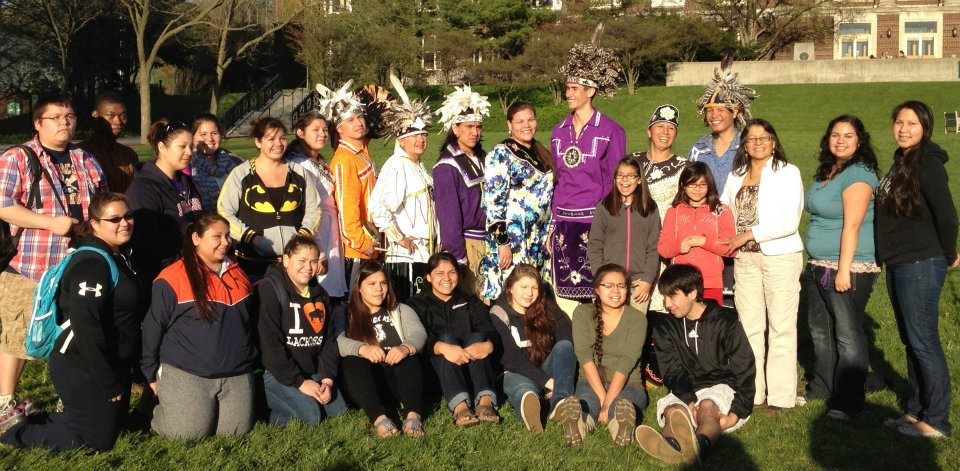By Duane Champayne
Indian Country Today, July 24, 2017 —
For Native American education to get better, tribal history and culture must be included

Native American students are seen here at Syracuse University in upstate New York. Native American education needs to improve and include tribal history and culture at the public school level. Courtesy Syracuse University
Native American education is still far behind the rest of the nation, and is not suitable to Natives who want to preserve tribal identities, communities or nations. Despite considerable investment in the education of Native children, Native American students are underprepared for college and graduate school. The education of Indian children does not address the cultural, political, and economic needs of Native American communities and governments.
In the United States, Native American children are educated in public schools or schools operated by the Bureau of Indian Affairs. While there has been some improvement in multi-cultural and general education, there has been little focus or improvement on education that serves tribal governments and Native communities.
How is it possible to address Native American education and make it more useful? Schools were introduced by national governments, and their main purpose was the integration and assimilation of Native American students. Hence school materials focused on mainstream learning, while not giving significant attention to tribal history, culture, or knowledge.
Contemporary public schools in the United States field many non-reservation students of Indian descent. At best, Natives are treated as members of an ethnic or cultural group in the United States. Most immigrants are people who left their homelands because of pressing political, economic or cultural conditions. Immigrants were looking for a new start, and were willing and highly motivated to adapt to the American market system, since it offers economic opportunities, political freedoms, and cultural diversity. Teachers and education administrators expect that American Indian children will pursue the same goals. Many Indian people are willing to accept the American view of education and participation in America.
Nevertheless, Indian tribes work to participate in contemporary markets, and uphold government-to-government relations, and offer significant Indian cultural diversity. Many tribal communities want Native American education that produces leaders, professionals, and artists, who can contribute toward upholding the tribal project of political sovereignty, cultural diversity, and economic well being. Tribal governments are not getting enough students and leaders needed to build, participated in, and protect tribal communities, governments, and community assets.

FREE Report: 101 Tips for Landing Native American Scholarships and Grants for College
In recent years, tribes have experimented with various ways for improving graduation rates of Native American students [101 Tips for Landing Native American Scholarships and Grants for College]. At the same time, tribal communities often have people in leadership roles that support tribal citizens, value tribal life, and are willing and capable of supporting tribal rights within the context of contemporary American life. Some gaming tribes have started to build tribal schools, but often found the expense, when going it alone, was too much. Other gaming tribes invested heavily in local K-12 schools. They built strong local schools not only for their own children, but for all children in the nearby school district. This strategy developed good schools, and complemented and extended public school financing. However, the schools followed public school curriculums and did not provide cultural knowledge or historical and legal materials that are necessary for a contemporary tribal citizen.
Another strategy was to press the students toward greater achievement and offer college courses to Native American high school students. The courses provided college credit, but at the same time also provided legal, cultural, and policy knowledge about Indian affairs that are usually missing in private, public, and Bureau of Indian Affairs schools. The supplementary Indian studies college classes enable Indian students to strengthen their college applications with extra-curricular college level course work. Extra classes look strong on a college application.
Furthermore, the students are introduced to central concepts in tribal culture, history, and law, all of which generates interest and knowledge in tribal nations and government. Since, the current Indian student pipeline does not provide enough students for college who will return to tribal communities or engage in Indian affairs policies. It may be necessary to complement private, BIA, and public schools with courses and challenges that enable Indian students to be successful in American society, while retaining tribal identity and commitments.










